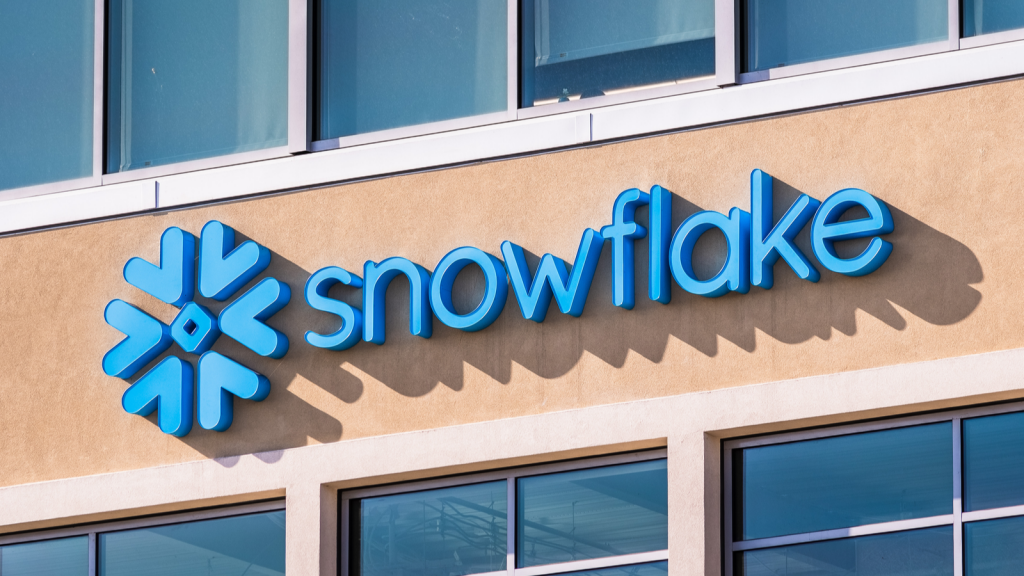Snowflake Alert: Time to Buy SNOW Stock After It’s 46% Plunge?

Data analytics firm Snowflake (NYSE:SNOW) is on a long slide lower. Although it impressively beat analyst expectations by a wide margin, guidance indicated a coming slowdown and profits are still nowhere in sight. As a result, the market is selling off Snowflake stock.
Shares are down 35% year-to-date but 46% below its February high. A recent cyberattack on its clients’ data depressed shares further. Despite the decline, SNOW stock still trades at a lofty 14 times sales. Has the stock retreated enough (or too much) to make Snowflake a buy? Let’s dig in to find out.
A Closer Look at Snowflake Stock
Snowflake turned in an impressive quarter. Product revenue jumped 34% year-over-year to $790 million with a net revenue retention rate of 128%.
That was lower than the 131% in the fourth quarter and well off the 151% from last year but still a significant amount. Net revenue retention rate refers to the annual recurring revenue of existing clients compared to the ARR from the same customers last year.
However, Snowflake reported it grew its customer base by 21% to 9,288 clients with 485 of them spending $1 million or more with the company.
That is an increase of 30% from last year. It shows Snowflake is still growing at a very fast clip, just not as fast as it once was.
The problem for the data analytics outfit was its guidance. Snowflake is looking at an across-the-board slowdown in sales and margins.
The company said it expects product growth in fiscal 2025 to come in at 24%, far below the 38% growth it saw last year and just 30% of the 70% rate of growth it notched in fiscal 2023.
Adjusted product gross margins are also slipping to 75% from 78% last year but in line with its performance in 2023 and 2022. Worse, operating margins are expected to plunge to 3% from 8% last year and below the 5% record two years ago.
Investing In the Future
On the surface slowing growth and slowing profits all the while losing money looks bad. But it’s not so bad as it seems. Part of the reason Snowflake is taking a hit on margins is because it is investing heavily in AI capabilities.
Snowflake went on a spending spree over the last two years to bring advanced AI and deep learning to the data cloud. It acquired search company Neeva, open-source app platform Streamlit and data sorting software maker Applica.
The data analytics shop also developed Cortex for users to access and use generative AI to analyze data and build their own AI applications. Moreover, Snowflake has been buying Nvidia’s (NASDAQ:NVDA) expensive AI graphics processing units to handle all the complex computing power AI demands.
Because these investments cost a lot of money, Snowflake is seeing its margins compress, though probably just temporarily.
The guidance also omits any potential contribution it will receive from its new product launches. When we get to the end of fiscal 2025, the results may look dramatically better than what they indicate now.
A Waiting Game
With a new CEO onboard, Snowflake has certainly set the bar low enough to underpromise and overdeliver, something that is not necessarily bad in a business. Yet does this make Snowflake a buy?
Certainly, it attracts a lot of enterprise-class companies to its product lineup. Over 700 Forbes Global 2000 businesses are currently clients of Snowflake, an 8% increase from last year.
But despite its strong numbers, Snowflake stock is expensive. At 14 times sales and 52 times the free cash flow the data analytics firm produces, shares are not cheap. It’s hard to recommend buying SNOW stock at these levels.
Although Warren Buffett owns a sizable stake in the company, some 6.1 million shares worth $791 million, making it his largest direct investment in AI, I would recommend holding off on buying the stock. Wait till we see whether the investments Snowflake made in AI pay off in the long run.
On the date of publication, Rich Duprey did not hold (either directly or indirectly) any positions in the securities mentioned in this article. The opinions expressed in this article are those of the writer, subject to the InvestorPlace.com Publishing Guidelines.









